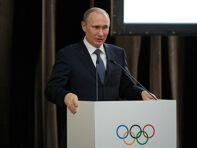From now on, LeBron James will have to play with a 50-pound backpack strapped to his body. Mike Trout will be forced to use a heavier bat and Katie Ledecky must wear a scuba tank.
That’s the logical outcome of a decision by the track and field’s governing body were to be taken to its conclusion. The IAAF is proposing to mandate that some female track athletes with naturally occurring high level of testosterone take drugs to lower their testosterone. The argument goes that these women have an unfair genetic advantage via a condition known as hyperandrogenism.
If so, then James, Trout and Ledecky also have unfair genetic advantages, as do all great athletes. Yet, we celebrate these super athletes while the IAAF is punishing specific track athletes who have been dominating the competition.
Most notably, this decision affects South African middle distance runner Caster Semenya, who was stellar in the 800 meters at the 2012 and 2016 Olympics, winning gold in both and dominating internationally. Some competitors complained that Semenya had an unfair advantage because of more testosterone, which spurred this latest move.
The New York Times sums up the impact:
Female track athletes with elevated levels of testosterone, a condition known as hyperandrogenism, will be required to lower the amount of the hormone circulating in their blood for six months before being allowed to compete from the quarter-mile to the mile in major international events like the Olympics and the world championships. …
If they do not, they will be faced with difficult choices — hormone therapy; restricting their performances to national meets; competing against men; entering events for so-called intersex athletes, if any are offered; moving to longer or shorter distances; or essentially giving up their chance to participate in the sport’s most prestigious competitions.
This new rule applies only to competitors in races from 400 meters to a mile. It does not apply to sports such as the hammer throw or pole vault, where strength from extra testosterone was also found to help a woman. It’s hard not to conclude that the micro-targeting of the affected sports is geared towards Semenya, who tweeted in response:
— Caster Semenya (@caster800m) April 26, 2018
Katrina Karkazis, an expert in biomedical ethics now at Yale, called the new policy discrimination dressed up as science and her article for the Guardian puts the issue in perfect perspective.
This regulation is about targeting and impeding a few exceptional women of color from the global south, especially Caster Semenya. … What’s at stake here is far more than the right to participate in a sport. Women’s bodies, their well-being, their ability to earn a livelihood, their very identity, their privacy and sense of safety and belonging in the world, are on the line. This makes the IAAF’s pious commitment to “respect and preserve the dignity and privacy of athletes” all the more stunning.
Chris Mosier, a champion transgender duathlete and triathlete, called the decision unfair and racist in a series of tweets.
We cannot overlook that Caster Semenya is the specific target here. I’ll file this under racism, as well as sexist ideas of how a woman can look. The message? Female athletes: you can be strong but not too strong. Racism, you say? Yes. If Caster was white, there would be less outrage at her dominance. Example: where was the outrage when Katie Ledecky was beating women off the TV screen in Rio? A full pool length — dominance like we’ve never seen.
Mosier’s comment about Ledecky is spot on. She crushed the competition in Rio, winning five gold medals, some by absurd lengths. Like Michael Phelps, she seems more fish than human in the water, the product of amazing genes for swimming (and a ton of hard work), yet both swimmers are celebrated, not castigated for their “unfair” biological advantages.
What’s happening with Semenya seems to be discrimination pure and simple. I would expect the IAAF’s new policy to be appealed to the Court of Arbitration for Sport.







































